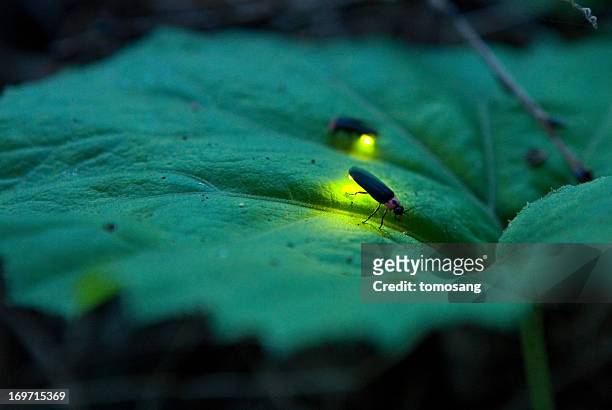Fireflies, also known as lightning bugs, glow at night as a means of communication and attracting mates. The light they produce is a form of bioluminescence, which is a biochemical reaction that generates light within their bodies. This unique ability to produce light is mainly observed in certain insects, marine creatures, and fungi. At night, fireflies emit their enchanting glow through a fascinating process. Inside their bodies, fireflies secrete an enzyme called luciferase, which interacts with luciferin, leading to the oxidation of magnesium. This reaction takes place in the presence of both magnesium and oxygen. As a result of this chemical reaction and the oxidation of magnesium, light is emitted, creating the mesmerizing glow that we observe when fireflies are active in the dark.
Here's Why Fireflies Glow At Night & Produce their Enchanting Glow:
1: Bioluminescent Chemicals:
Fireflies possess specialized cells in their abdomen that contain two essential chemicals: luciferin and luciferase. When oxygen and adenosine triphosphate (ATP) are present, these chemicals react together in the presence of the enzyme luciferase, resulting in the emission of light.
2: Communication:
The primary reason fireflies glow is to communicate with potential mates. They have distinct flashing patterns unique to each species, which they use to identify and attract suitable partners. Males and females of the same species can recognize each other's flashes, helping them find a compatible mate in the darkness of the night.
3: Defense:
In some cases, fireflies use their bioluminescence as a defense mechanism. Certain species produce a bitter-tasting compound that makes them unappealing to predators. By glowing, they signal their toxicity, warning potential predators to stay away.
4: Species Identification:
Aside from mating, glowing can also play a role in species identification. Different firefly species may have slightly different flashing patterns or colors, helping them distinguish their own kind from others.
It's essential to note that not all fireflies glow as adults. Some species may exhibit glowing behaviors during their larval stages, and their flashes might differ from those of adult fireflies. The exact reasons for glowing can vary slightly among different firefly species, but the core purpose remains communication and mating. The mesmerizing light shows they create during warm summer evenings have fascinated humans for generations and continue to be a subject of curiosity and wonder.
What are 3 reasons fireflies glow?
Fireflies glow for three main reasons:
- To attract and communicate with potential mates. Each species has a unique flashing pattern that helps them find compatible partners in the darkness.
- Some fireflies use their bioluminescence as a defense mechanism. They produce a bitter-tasting compound that makes them unappealing to predators, and the glowing serves as a warning signal.
- Fireflies may also glow for species identification, as different species can have slightly different flashing patterns or colors.
Do only female fireflies light up?
No, both male and female fireflies can light up. Both genders have the specialized cells in their abdomen containing the bioluminescent chemicals needed to produce light.
Why do fireflies blink on and off?
Fireflies blink on and off to create specific flashing patterns that are essential for communication. These patterns are species-specific, allowing fireflies to recognize and find potential mates of the same species. The blinking is a form of visual signaling in the dark.
Why do fireflies glow?
Fireflies glow primarily to communicate with potential mates and attract them for reproduction. Additionally, glowing can serve as a defense mechanism to warn predators of their toxicity, and it can aid in species identification.
Do female fireflies glow?
Yes, female fireflies do glow. Both male and female fireflies possess the ability to produce light through bioluminescence.
Can dead fireflies glow?
No, dead fireflies cannot glow. The bioluminescent reaction that causes them to glow requires a living and functional system, which ceases to exist upon death. Once a firefly dies, its ability to produce light is lost.








No comments:
Post a Comment